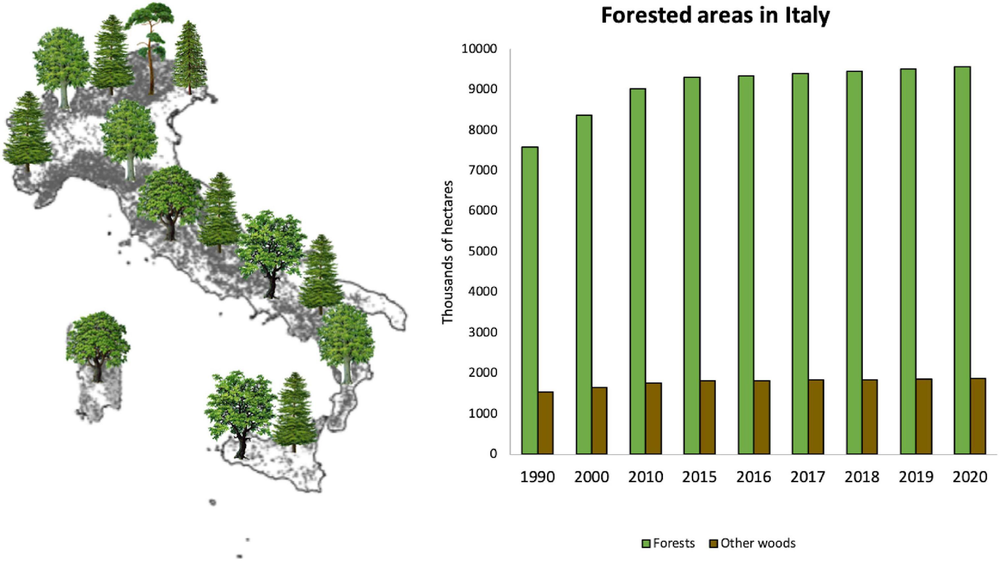holistic management of emerging forest pests and diseases
New HOMED research: Suggestions to fill the gaps and improve the phytosanitary system in Italy
A recent research paper published in the open-access academic journal Frontiers in Forests and Global Change, titled "Forest Health in Italy: Learning From the Xylella Incursion" provides comments and suggestions to fill the gaps and improve the phytosanitary system in Italy based on the examination of the recent outbreak of Xylella fastidiosa in the country.

Forested areas in Italy (data from: "National Inventory of Forests and Forest Carbon Pools-INFC")
The authors of the article, amongst whom HOMED partners Anna Maria Vettrainoof Viterbo University, and Alberto Santini of Institute for Sustainable Plant Protection (CNR), believe that as Italian forests are vulnerable to invasive forest pathogens (IFPs) because of the diversity of habitats and climates that the region offers, any management tools to prevent the arrival and establishment of IFPs must be included in the framework of phytosanitary legislation.
The researchers perform analysis of the legislative framework and the recent outbreak of Xylella fastidiosa in Italy from the perspective of the EU phytosanitary system. Based on their observations, they suggest alternative approaches to be applied at different stages associated with plant imports. The recommendations follow the various stages of the biosecurity continuum, from pre-border, to border, to post-border.
Authors of the article note that the EU could improve its biosecurity policy by using cost- benefit analysis of imports vs. damage from pest invasions - a technique already adopted by different countries around the world.
In conclusion, the authors point out that Xylella fastidiosa is a paradigmatic case that clearly demonstrates the importance of keeping plants healthy by preventing the entry of IFPs. They outline that as long as there are no curative or containment methods available, the disease's impact on the EU economy and European ecosystems will grow.
You can read the full paper here.